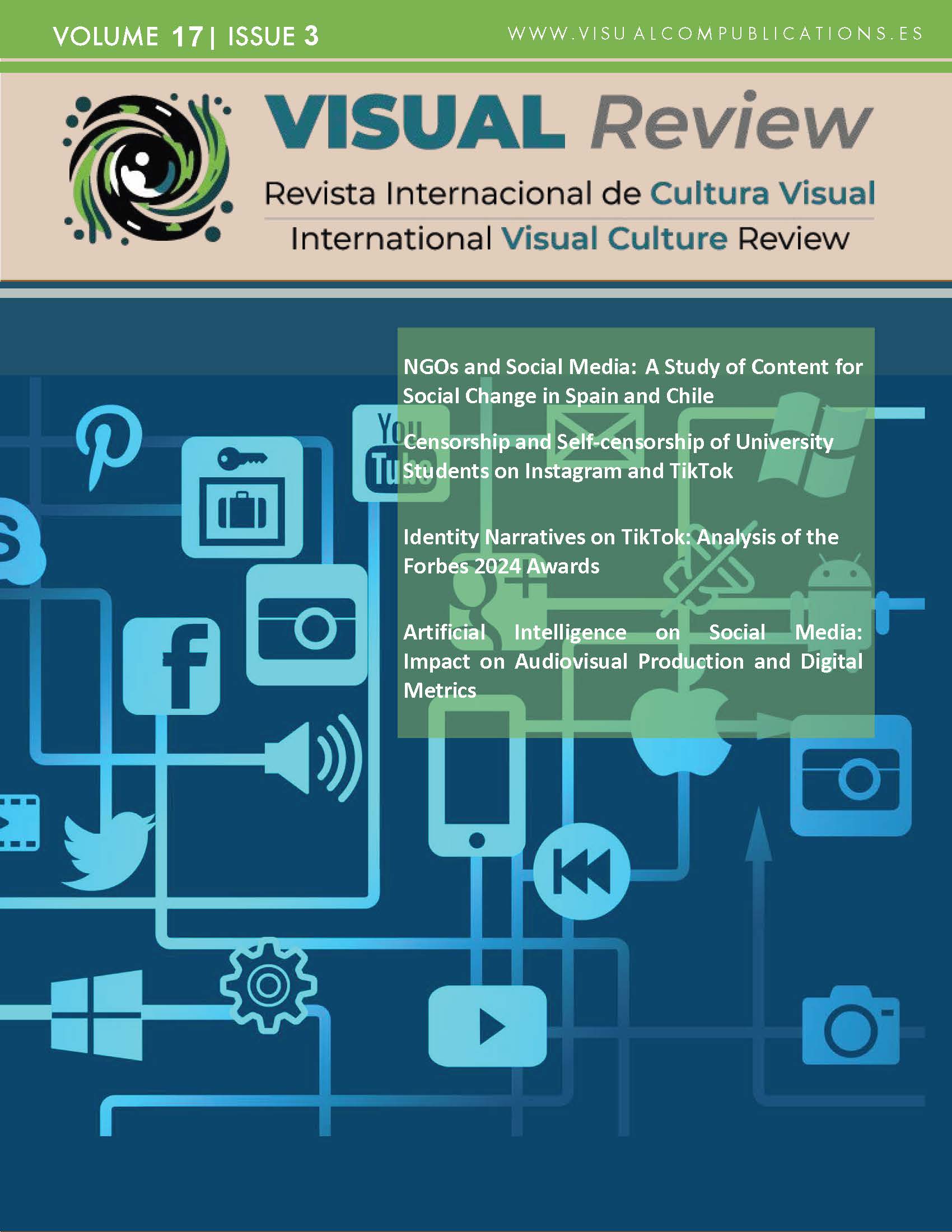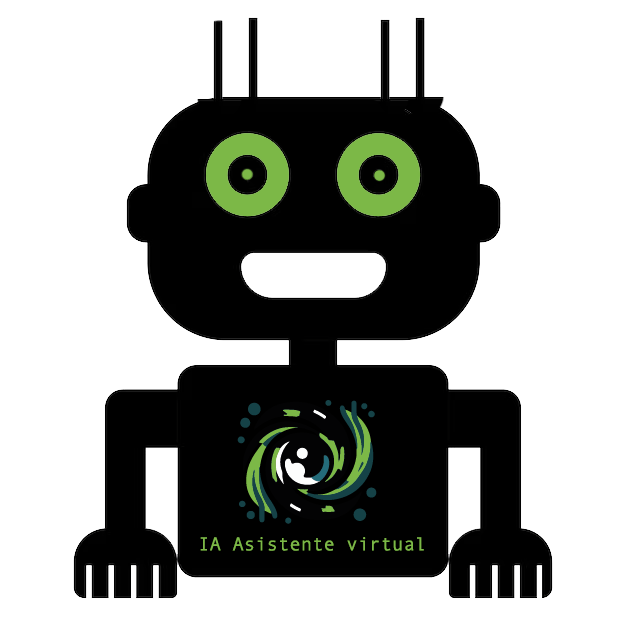Análisis Bibliométrico de la Animación 3D en el Contexto de la Cultura Digital
Evolución, Tendencias y Contribuciones (2000-2024)
DOI:
https://doi.org/10.62161/revvisual.v17.5778Palabras clave:
Animación 3D, Cultura Digital, Análisis Bibliométrico, Realidad Virtual, Inteligencia ArtificialResumen
This study presents a comprehensive bibliometric analysis of 3D animation research within digital culture from 2000 to 2024. The findings show steady growth in scientific production up to 2021, driven by rapid technological advances and their application in various fields such as education, medicine, and entertainment. China, the United States, and Canada stand out as the main contributors, although China’s lower level of international collaboration points to opportunities for strengthening global research networks. The keyword analysis reveals a marked increase in topics related to virtual reality, augmented reality, and e-learning, reflecting the adoption of immersive technologies in both educational and professional contexts. Likewise, emerging areas centered on artificial intelligence and machine learning broaden the spectrum of applications and improve efficiency in 3D animation production. Limitations include the reliance on a single database and the exclusion of non-English documents, which could underestimate significant contributions in other languages.
Descargas
Estadísticas globales ℹ️
|
629
Visualizaciones
|
442
Descargas
|
|
1071
Total
|
|
Citas
Aria, M., & Cuccurullo, C. (2017). bibliometrix: An R-tool for comprehensive science mapping analysis. Journal of Informetrics, 11(4), 959-975. https://doi.org/10.1016/j.joi.2017.08.007 DOI: https://doi.org/10.1016/j.joi.2017.08.007
Aziz, M. A., McKenzie, J. C., Wilson, J. S., Cowie, R. J., Ayeni, S. A., & Dunn, B. K. (2002). The human cadaver in the age of biomedical informatics. The Anatomical Record, 269(1), 20-32. https://doi.org/10.1002/ar.10046. DOI: https://doi.org/10.1002/ar.10046
Donthu, N., Kumar, S., Mukherjee, D., Pandey, N., & Lim, W. M. (2021). How to conduct a bibliometric analysis: An overview and guidelines. Journal of Business Research, 133, 285-296. https://doi.org/10.1016/j.jbusres.2021.04.070. DOI: https://doi.org/10.1016/j.jbusres.2021.04.070
Gazni, A., Sugimoto, C. R., & Didegah, F. (2012). Mapping world scientific collaboration: Authors, institutions, and countries. Journal of the American Society for Information Science and Technology, 63(2), 323-335. https://doi.org/10.1002/asi.21688 DOI: https://doi.org/10.1002/asi.21688
Guo, J., Guo, Q., Feng, M., Liu, S., Li, W., Chen, Y., & Zou, J. (2023). The use of 3D video in medical education: A scoping review. International Journal of Nursing Sciences, 10(3), 430-437. https://doi.org/10.1016/j.ijnss.2023.06.006. DOI: https://doi.org/10.1016/j.ijnss.2023.06.006
Hiranyachattada, T., & Kusiririrat, K. (2020). Using mobile augmented reality to enhance students' conceptual understanding of physically-based rendering in 3D animation. European Journal of Science and Mathematics Education, 8(1), 1-5. https://doi.org/10.30935/scimath/9542. https://doi.org/10.30935/scimath/9542 DOI: https://doi.org/10.30935/scimath/9542
Ho, L.-H., Sun, H., & Tsai, T.-H. (2019). Research on 3D Painting in Virtual Reality to Improve Students' Motivation of 3D Animation Learning. Sustainability, 11(6), 1605. https://doi.org/10.3390/su11061605. DOI: https://doi.org/10.3390/su11061605
Johnson, L., Adams Becker, S., Estrada, V., & Freeman, A. (2016). NMC Horizon Report: 2016 Higher Education Edition. The New Media Consortium.
Katz, J. S., & Martin, B. R. (1997). What is research collaboration? Research Policy, 26(1), 1-18. https://doi.org/10.1016/S0048-7333(96)00917-1. DOI: https://doi.org/10.1016/S0048-7333(96)00917-1
Kerlow, I. V. (2009). The Art of 3D Computer Animation and Effects (4th ed.) Wiley.
Korbel, J. O., & Stegle, O. (2020). Effects of the COVID-19 pandemic on life scientists. Genome Biology, 21(1), 113. https://doi.org/10.1186/s13059-020-02031-1. https://doi.org/10.1186/s13059-020-02031-1 DOI: https://doi.org/10.1186/s13059-020-02031-1
Kumar, A., Saudagar, A. K. J., AlKhathami, M., Alsamani, B., Hasanat, M. H. A., Khan, M. B., Kumar, A., & Singh, K. U. (2022). AIAVRT: 5.0 Transformation in Medical Education with Next Generation AI-3D Animation and VR Integrated Computer Graphics Imagery. Traitement du Signal, 39(5), 1823-1832. https://doi.org/10.18280/ts.390542 DOI: https://doi.org/10.18280/ts.390542
Lin, S. (2022). Research on the Application of 3D Animation Special Effects in Animated Films: Taking the Film Avatar as an Example. Scientific Programming, 2022, Article ID 1928660. https://doi.org/10.1155/2022/1928660 DOI: https://doi.org/10.1155/2022/1928660
Ma, Y. (2024). A deep learning-based method for evaluating the quality of corporate brand packaging visual design. Applied Mathematics and Nonlinear Sciences, 9(1), 123-134. https://doi.org/10.2478/amns-2024-0680 DOI: https://doi.org/10.2478/amns-2024-0680
Pertíñez López, J., & Alonso Valdivieso, C. (2022). Hybrid processes in experimental animation. VISUAL REVIEW. International Visual Culture Review / Revista Internacional de Cultura Visual, 11(4), 1–9. https://doi.org/10.37467/revvisual.v9.3700 DOI: https://doi.org/10.37467/revvisual.v9.3700
Purves, T. (2013). 3D Animation for the Raw Beginner Using Maya. CRC Press. https://doi.org/10.1201/b15467 DOI: https://doi.org/10.1201/b15467
Schell, J. (2019). The art of game design: A book of lenses (3rd ed.). CRC Press.
Scherzer, J., Buchanan, M. F., Moore, J. N., & White, S. L. (2010). Teaching Veterinary Obstetrics Using Three-Dimensional Animation Technology. Journal of Veterinary Medical Education, 37(3), 299-303. https://doi.org/10.3138/jvme.37.3.299. https://doi.org/10.3138/jvme.37.3.299 DOI: https://doi.org/10.3138/jvme.37.3.299
Sierra Sánchez, J. (2012). Radio journalists in Barcelona: trends, training and employment situation. Zer: Journal of communication studies = Komunikazio ikasketen aldizkaria, 32, 73-87.Tang, L., & Shapira, P. (2011). China-US scientific collaboration in nanotechnology: Patterns and dynamics. Scientometrics, 88(1), 1-16. https://doi.org/ 10.1007/s11192-011-0376-z. DOI: https://doi.org/10.1007/s11192-011-0376-z
Wang, L., Wang, X., Philbin, S. P., & Zhou, D. (2015). International research collaboration: An emerging domain of innovation studies? Research Evaluation, 24(2), 145-160. https://doi.org/ 10.1016/j.respol.2018.08.005.
Wolf, M. J. P., & Perron, B. (Eds.) (2013). The Routledge Companion to Video Game Studies. Routledge. https://doi.org/10.4324/9780203114261 DOI: https://doi.org/10.4324/9780203114261
Zhang, R. (2022). Three-Dimensional Animation Space Design Based on Virtual Reality. Scientific Programming, 2022, Article ID 6559155. https://doi.org/10.1155/2022/6559155 DOI: https://doi.org/10.1155/2022/6559155
Zhang, W., & Tsai, S.-B. (2021). A Corpus-Based and Complex Computing Digital Media System for 3D Animation. Wireless Communications and Mobile Computing, 2021, Article ID 7578957. https://doi.org/10.1155/2021/7578957 DOI: https://doi.org/10.1155/2021/7578957
Descargas
Publicado
Cómo citar
Número
Sección
Licencia
Derechos de autor 2025 Los autores/as conservan los derechos de autor y ceden a la revista el derecho de la primera publicación y el derecho de edición

Esta obra está bajo una licencia internacional Creative Commons Atribución-SinDerivadas 4.0.
Los autores/as que publiquen en esta revista aceptan las siguientes condiciones:
- Los autores/as conservan los derechos de autor.
- Los autores/as ceden a la revista el derecho de la primera publicación. La revista también posee los derechos de edición.
- Todos los contenidos publicados se regulan mediante una Licencia Atribución/Reconocimiento-SinDerivados 4.0 Internacional. Acceda a la versión informativa y texto legal de la licencia. En virtud de ello, se permite a terceros utilizar lo publicado siempre que mencionen la autoría del trabajo y a la primera publicación en esta revista. Si transforma el material, no podrá distribuir el trabajo modificado.
- Los autores/as pueden realizar otros acuerdos contractuales independientes y adicionales para la distribución no exclusiva de la versión del artículo publicado en esta revista (p. ej., incluirlo en un repositorio institucional o publicarlo en un libro) siempre que indiquen claramente que el trabajo se publicó por primera vez en esta revista.
- Se permite y recomienda a los autores/as a publicar su trabajo en Internet (por ejemplo en páginas institucionales o personales), una vez publicado en la revista y citando a la misma ya que puede conducir a intercambios productivos y a una mayor y más rápida difusión del trabajo publicado (vea The Effect of Open Access).













